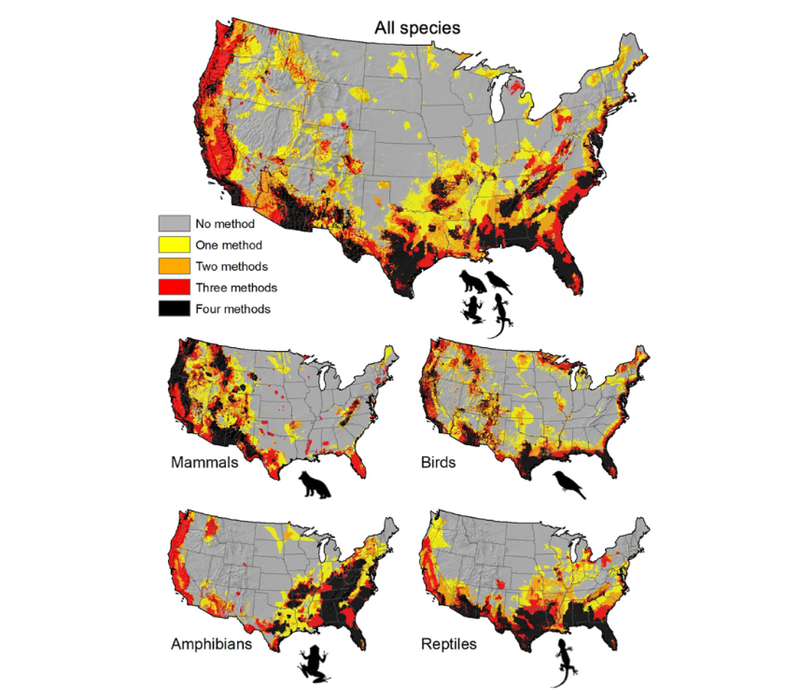

International and national initiatives aim to conserve at least 30% of lands and waters by 2030. To safeguard biodiversity, conservation actions must be distributed in places that represent ecosystem and species diversity. Various methods of prioritizing sites for conservation have been used in local and global assessments. However, the performance and consequences of alternative methods are usually unknown. Such comparisons are needed to confidently implement national and international conservation initiatives. Here, we compared four widely-used methods of prioritizing sites in the contiguous United States for conserving species of mammals, birds, amphibians, and reptiles. Specifically, we calculated and mapped species richness, rarity-weighted richness, and two complementarity-based prioritizations (additive benefit function [ABF] and core area zonation [CAZ] in the software Zonation). We compared maps derived from these alternatives with respect to spatial locations and overlap, patch size distributions of the top 30% priorities, and existing ownership and protected-area status. We used species-accumulation curves across ranked priorities to evaluate performance of methods and compared results at 30% total area. Mapped locations and patch sizes of the highest priorities varied by taxonomic class and method of prioritization. Complementarity-based methods (ABF and CAZ) more efficiently represented species than methods based on richness or rarity-weighted richness, especially for taxa with higher beta diversity (amphibians). ABF and CAZ methods also resulted in greater conservation opportunity for the top 30% of priorities compared to maps of richness. Area-based conservation targets, such as the ‘30 by 30’ initiative, must distribute limited resources in ways that safeguard all species. Our results show that spatial locations and configuration, performance, and conservation opportunity vary among prioritization methods and taxonomic classes.